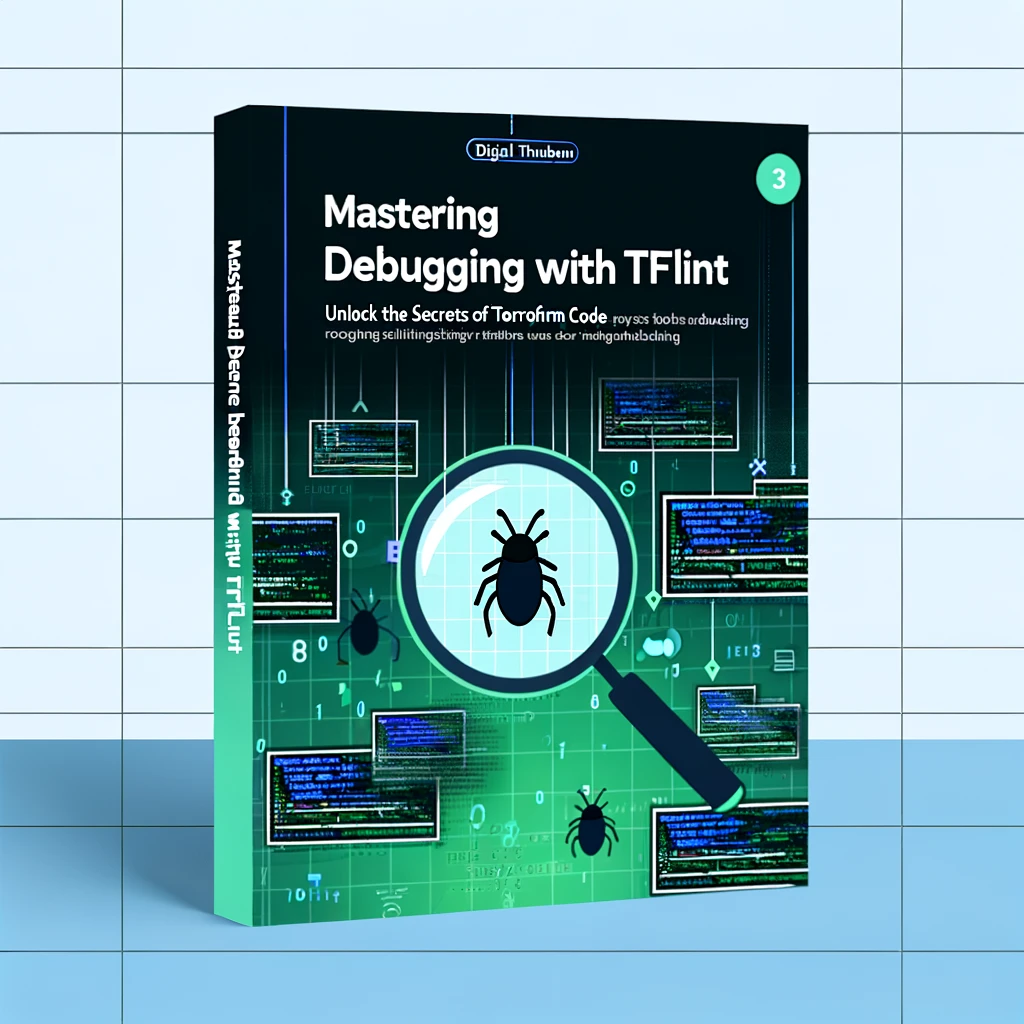Introduction
Debugging with TFLint
In the world of Infrastructure as Code (IaC), Terraform stands out for its ability to define and provision cloud infrastructure using a high-level configuration language. However, as with any programming or scripting language, writing Terraform configurations can sometimes lead to errors or unintended behaviors. This is where TFLint, a powerful linting tool for Terraform, becomes an invaluable asset. TFLint helps developers to catch errors that Terraform does not, ensuring that infrastructure is provisioned as intended. This article explores TFLint, offering insights into its capabilities, setup, and how to effectively debug Terraform configurations using this tool.
What is TFLint?
TFLint is a linting tool specifically designed for Terraform. It goes beyond the basic syntax checks performed by terraform validate by analyzing your Terraform configurations to find issues that may affect the provisioning of infrastructure. These issues include syntax errors, deprecated syntax, unused declarations, and provider-specific errors. TFLint’s extensibility through plugins allows it to support a wide range of Terraform providers, enhancing its error detection capabilities.
Setting Up TFLint
Getting started with TFLint involves a few simple steps:
- Installation: TFLint can be installed on macOS, Linux, and Windows. Installation methods vary, but common approaches include downloading a pre-compiled binary or using package managers such as Homebrew for macOS or Chocolatey for Windows.
- Initialization: After installation, TFLint needs to be initialized in your Terraform project directory. Running
tflint --initwill prepare TFLint for use by downloading and installing any necessary plugins based on the providers used in your Terraform configurations. - Configuration: TFLint can be customized through a
.tflint.hclfile in your project directory. This file allows you to enable or disable specific rules and plugins, making TFLint adaptable to your project’s needs.
Debugging with TFLint
Once TFLint is set up, you can begin the debugging process. Here’s how to effectively use TFLint to debug your Terraform configurations:
- Running TFLint: Simply execute
tflintin your project directory. TFLint will scan your Terraform files and report any issues it finds. For a more detailed report, use the--format=jsonoption to get output in JSON format, which can be easily integrated with other tools or processes. - Interpreting Results: TFLint categorizes issues into errors and warnings. Errors are critical issues that likely prevent your Terraform configurations from being applied correctly, while warnings highlight best practices or potential optimizations. Carefully review the issues reported by TFLint and adjust your Terraform configurations accordingly.
- Incremental Debugging: After making adjustments based on TFLint’s feedback, rerun TFLint to ensure that those issues have been resolved. This incremental approach helps to methodically address problems in your Terraform code.
- Using TFLint in CI/CD Pipelines: Integrating TFLint into Continuous Integration/Continuous Deployment (CI/CD) pipelines can help catch issues early in the development cycle. This proactive approach to debugging can significantly reduce the time and effort required to troubleshoot problems in later stages.
Advanced TFLint Features
TFLint’s capabilities extend beyond basic linting:
- Custom Rules: TFLint allows the creation of custom rules to enforce specific coding standards or practices unique to your project.
- Plugin System: With its plugin system, TFLint can be extended to support additional Terraform providers and custom checks, ensuring comprehensive coverage of your infrastructure configurations.
Conclusion
TFLint is a powerful tool that enhances the Terraform development workflow by catching errors and enforcing best practices. By integrating TFLint into your development process, you can ensure that your Terraform configurations are robust, efficient, and error-free. Remember, the key to effective debugging with TFLint lies in understanding its reports, iteratively refining your code, and leveraging its extensibility to suit your project’s needs. Happy debugging!


